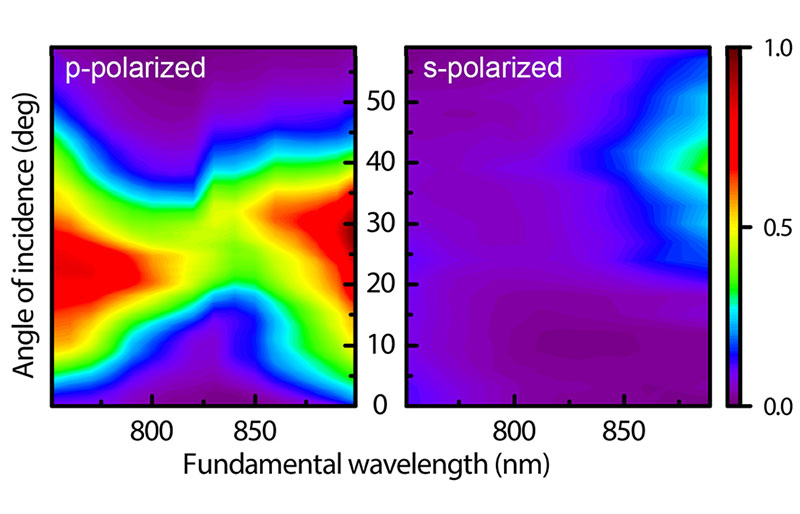Hyperbolic metamaterials (HMM) receive much interest owing to their unique optical and nonlinear optical properties originating from artificial hyperbolic dispersion [1]. The spectra of the components of HMM effective dielectric permeability (ε) reveal two specific features responsible for a number of perspective phenomena: passing ε through zero value (epsilon-near-zero, ENZ) and the pole of the effective dielectric constant (epsilon-near-pole, ENP). Recently we have shown significant enhancement of the second harmonic generation (SHG) power close to the ENZ wavelength due to the singularity of the electric field inside the HMM [2].
Experiments performed in the present work [3] confirmed that a strong increase in SHG originates from the fulfillment of the phase-matching conditions. We have shown the crucial role of the two specific spectral points, ENZ and ENP, which govern the dispersion of the composite metamaterial at the SHG and fundamental wavelengths. The s-polarized fundamental radiation gives a single SHG maximum, whereas in the case of p- polarization two maxima appear at inclined incidence, which confirms the phase-matched second harmonic generation in a submicrometer-thick slab of nanocomposites.
The work was supported by Russian Science Foundation (Grant No. 18-73-10151).
[1] P. Huo, S. Zhang, Y. Liang, Y. Lu, T. Xu, Hyperbolic Metamaterials and Metasurfaces: Fundamentals and Applications // Advanced Optical Materials, 2019, v. 7, 1801616. DOI: https://doi.org/10.1002/adom.201970054.
[2] I.A. Kolmychek, V.B. Novikov, I.V. Malysheva, A.P. Leontiev, K.S. Napolskii, T.V. Murzina, Second-harmonic generation spectroscopy in gold nanorod-based epsilon-near-zero metamaterials // Optics Letters, 2020, v. 45, pp. 1866-1869. DOI: https://doi.org/10.1364/OL.384411.
[3] I.A. Kolmychek, I.V. Malysheva, V.B. Novikov, A.P. Leontiev, K.S. Napolskii, T.V. Murzina, Phase-matched optical second harmonic generation in a hyperbolic metamaterial based on silver nanorods // Physical Review B, 2020, v. 102, 241405. DOI: https://doi.org/10.1103/PhysRevB.102.241405.

